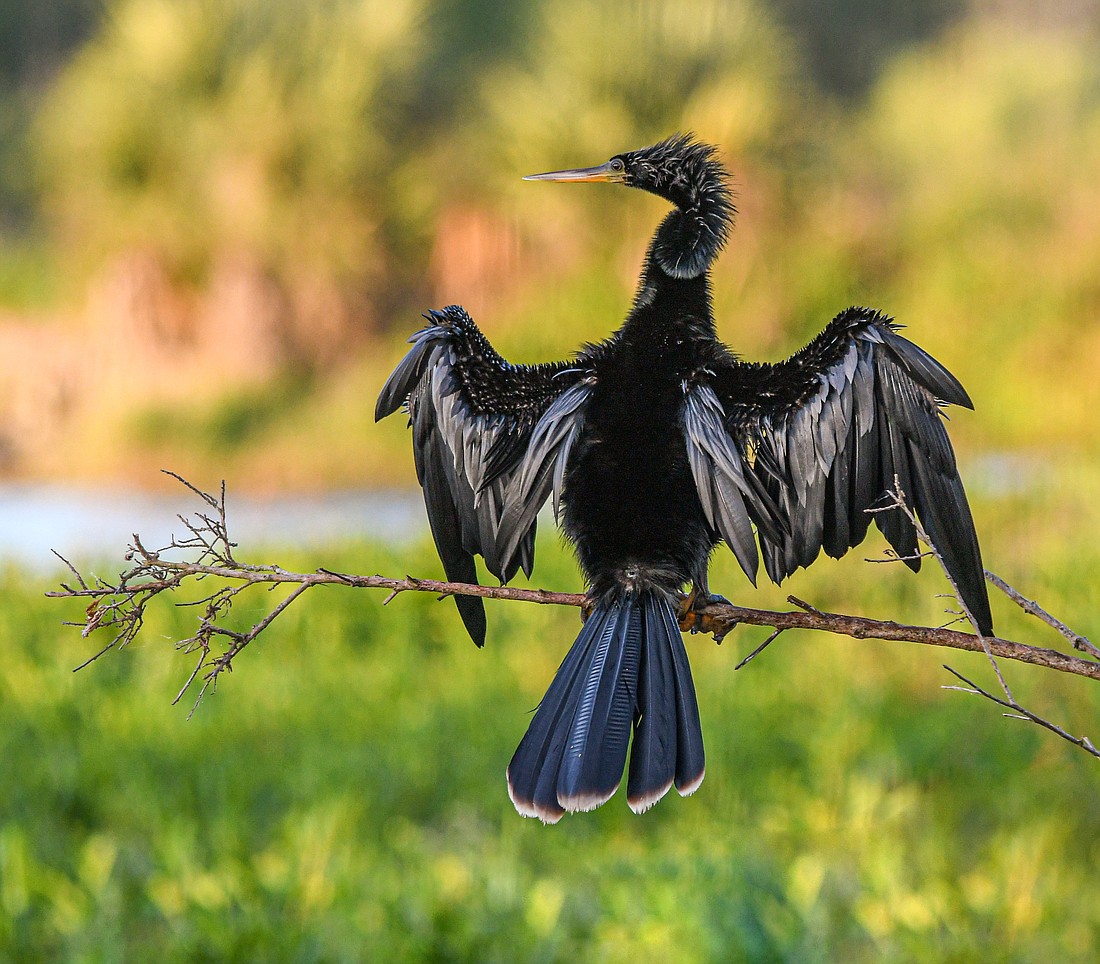- November 5, 2025
-
-
Loading

Loading

Anhingas swims with their necks and upward-pointing heads above water, resembling a snake ready to strike, and are therefore often known as a “snake bird.”
A year-round resident of Florida, their name is derived from a Tupi word, which, in the mythology of the people indigenous to Brazil, referred to a malevolent demonic forest spirit, often translated as "devil bird.''
Anhingas and double-crested Cormorants are commonly confused. Both are water birds that have feathers that become waterlogged, making it easier for them to hunt deeper underwater. And, both can therefore be seen perched with wings spread, drying out after a swim. Their bills are the easiest way to tell them apart: An anhinga's bill is slender, pointed and long, whereas a cormorant's is curved, with a sharp hook.
Unlike double-crested cormorants, who chase fish deep underwater, Anhingas mostly swim around and wait for fish to come near. And then, with a rapid thrust of their agile, slender necks, they spear their prey on their long, pointed bill.
Anhingas surface to feed, usually flipping their heads back to toss the fish up into the air, then swallowing it headfirst.
But, as they have back-facing serrated ridges on their beaks, to prevent fish from prematurely slipping off, removing the fish can sometimes be a bit of a chore.
Because they spend a lot of time underwater, anhingas are vulnerable to boat strikes. And, their bills and bodies can easily become entangled in fishing line or other trash discarded in the water, which can be lethal. Retrieving discarded and snagged fishing line helps protect all of our birds. As does keeping trash and plastics out of our beautiful waterways.